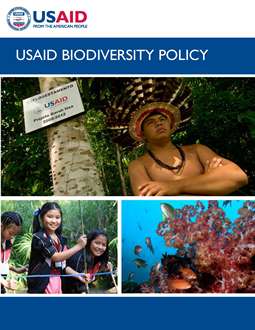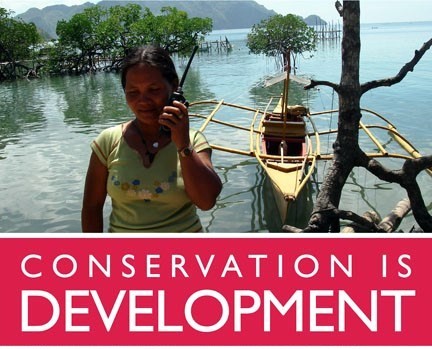- What We Do
- Agriculture and Food Security
- Democracy, Human Rights and Governance
- Economic Growth and Trade
- Education
- Ending Extreme Poverty
- Environment and Global Climate Change
- Global Climate Change
- Conserving Biodiversity and Forests
- Sustainable Urbanization for Global Progress and Security
- Securing Land Tenure and Property Rights for Stability and Prosperity
- Sustainable Land Management
- Environmental Impact Assessment
- Knowledge Management for Environment and Natural Resources
- Sustainable Tourism
- Earth Day
- Gender Equality and Women's Empowerment
- Global Health
- Water and Sanitation
- Working in Crises and Conflict
- U.S. Global Development Lab
USAID Biodiversity Policy ![]() (pdf - 1014k)
(pdf - 1014k)
USAID aims to shape a future in which both people and biodiversity thrive via improvements in economic prosperity, social equity and environmental stewardship. The Agency’s first-ever Biodiversity Policy builds upon our long history of conserving biodiversity for current and future generations, and reflects our recognition of the role that healthy natural systems play in achieving development goals.
The Biodiversity Policy represents our strengthened commitment to conserve biodiversity through: 1) Strategic actions to conserve the world’s most important biodiversity, such as stamping out global wildlife trafficking; and 2) A new focus on integrating biodiversity and other development sectors for improved outcomes. The Policy recognizes that biodiversity loss can be driven by unsustainable development, that there are trade-offs between biodiversity conservation and development goals that must be understood and managed, and that biodiversity conservation itself can be a critical tool for achieving sustainable development.
The Policy will also catalyze shifts needed to align with the USAID Forward agenda to create more strategic, focused and results-oriented biodiversity programming and by applying scientific and research-motivated approaches to support sustainable biodiversity conservation and development outcomes.
With these shifts, the Policy:
USAID’S BLUEPRINT FOR
|
- Establishes geographic priorities to promote the selective, focused and strategic use of biodiversity resources through identifying two tiers of priority countries/regions for biodiversity programming. At least 50 percent of USAID Biodiversity resources will focus on Tier One countries and regions.
- Prioritizes the use of integrated approaches that support biodiversity conservation and improved development outcomes. Practical efforts will focus on “internal change for external impact,” that is, building USAID’s internal capabilities, evidence and systems to more effectively integrate biodiversity conservation and development.
- Catalyzes an evidence-based action and learning agenda which will support implementation of a research agenda, build increased Agency capacity for monitoring and evaluation, and improve knowledge management.
- Emphasizes forging innovative partnerships with the private and public sectors, civil society and academia to leverage resources and skills that can magnify conservation and development results and harness innovations in science and technology.
- Strengthens USAID’s Biodiversity Code that defines Agency programs in the sector. These limited revisions introduce more rigor to project design and better address threats to priority species and ecosystems.
USAID will continue to conserve biodiversity through strategic actions to reduce threats to priority biodiversity and to target key transboundary and global drivers, such as wildlife trafficking, that contribute to biodiversity loss. It will also continue its strong leadership role in influencing key international policy fora for improved conservation outcomes.
The development of this Policy was evidence-based and participatory, with iterative rounds of review that culminated in a public consultation period. The Policy has benefited greatly from this level of expert engagement, consultation and transparency, and we are proud to be heeding President Obama’s call for open government.
RELATED LINKS:
Biodiversity and Development Handbook
Integrating Biodiversity and Climate Change Adaptation in Activity Design (PDF)
Conservation is Development (Video)
Communities and Indigenous People (PDF)
Wildlife Trafficking and Security (PDF)
Science and Technology (PDF)
Partnerships (PDF)
Geographic Priorities for Biodiversity Conservation
Requirements of USAID Conservation Programs: the Biodiversity Code









Comment
Make a general inquiry or suggest an improvement.